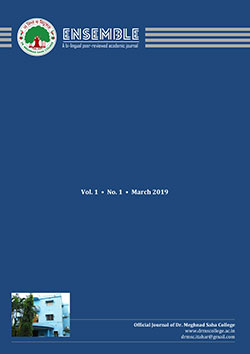EXPLAINING SPATIAL VARIATION OF RURAL DEVELOPMENT CONCERNING ACCESSIBILITY PARAMETERS: A CASE STUDY IN BELDANGA-I BLOCK OF MURSHIDABAD DISTRICT IN WEST BENGAL
Abstract:
Rural transport is essential and probably the most important part of rural development. It works as a physical linkage, which creates a couple of other linkages to ensure greater circulation within it. Developing rural areas means not only developing agriculture but also the transport infrastructure, which improves the level of accessibility Development can be equated with accessibility, and differences in accessibility within rural settlements might cause differences in development. The present paper is an attempt to look into the matter of the relationship between development and accessibility over space. For this purpose, Beldanga-1 Community Development Block of Murshidabad District has been chosen. Z-Score and Principal Component Analysis is used to determine the level of development using some selective demographic, household amenity, agricultural infrastructure, land use, and industrial criteria. For accessibility measurement distance from roads, service points, and nodal connectivity are used. The significant correlation coefficient of overall accessibility index with the level of development (Z-score) is found but has explained only 20% of the total variation of the development. So there may be other factors that control the level of development.
Keywords: accessibility, connectivity, overall accessibility index, physical accessibility, PMGSY
https://doi.org/10.37948/ensemble-2020-0201-a005
Views: 10290



